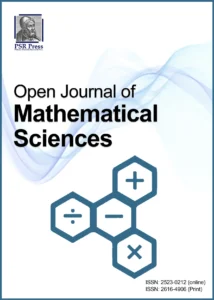The Open Journal of Mathematical Sciences (OMS) ISSN: 2523-0212 (Online) | 2616-4906 (Print) is partially supported by the National Mathematical Society of Pakistan, is a single-blind peer-reviewed and open-access journal dedicated to publishing original research articles, review papers, and survey articles in all areas of mathematics.
- Diamond Open Access: OMS follows the Diamond Open Access model—completely free for both authors and readers, with no article processing charges (APCs).
- Rapid Publication: Accepted papers are published online as soon as they are ready, ensuring timely dissemination of research findings.
- Scope: The journal welcomes high-quality contributions across all branches of mathematics, offering a broad platform for scholarly exchange.
- Publication Frequency: While articles are available online throughout the year, OMS publishes one annual print volume in December for readers who prefer physical copies
- Indexing: Scopus, ROAD, J-Gate Portal, AcademicKeys, Crossref (DOI prefix: 10.30538), Scilit, Directory of Research Journals Indexing.
- Publisher: Ptolemy Scientific Research Press (PSR Press), part of the Ptolemy Institute of Scientific Research and Technology.

